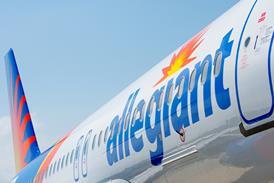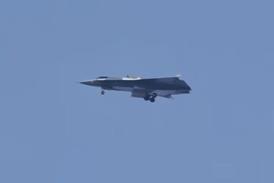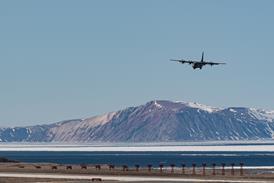As founder and chairman of the 150-member Middle East Business Aviation Association, Ali Al Naqbi is proud of the region's young breed of professional operators and service providers, and the Middle East's emergence as a major centre of the industry. But he is adamant that he does not want a return to the "crazy" market that preceded the global financial crisis of 2008.
Al Naqbi looks back on the two-year period as a gold rush of unhealthy competition, with a spate of start-ups undercutting and poaching employees from their rivals and occasionally bending the rules. Although some new entrants from that era have survived as profitable and respectable operators, others quickly slid back to obscurity.
"The market became saturated and uncontrollable," says Al Naqbi, who claims MEBAA's efforts to set standards for the region's fledgling industry became difficult. The recession was a necessary "correction".
 |
|---|
© Middle East Business Aviation Association"Operators are starting to reactivate. We just have to be careful to manage growth"Ali Al NaqbiChairman - Middle East Business Aviation Association |
As it comes together for the Middle East Business Aviation show in Dubai from 7-9 December, the region's industry has moved on, he says. Everyone felt the effects of the downturn, but flying hours and requests for quotations have increased significantly in 2010 and the sector is growing again. "Operators are starting to reactivate," says Al Naqbi, who runs Abu Dhabi's presidential flight department. "We just have to be careful to manage that growth."
MEBA's membership - and the profile of the exhibitors at the show - reflect a changing industry in the Middle East. A decade ago, Saudi Arabia dominated, says Al Naqbi. The growth of Abu Dhabi, Dubai and the other emirates has seen the UAE flourish to rival its neighbour as the biggest market in the Gulf. But other countries have emerged as centres of business aviation, including Qatar, Kuwait and, further away, Jordan, Egypt and Morocco. "There is now demand all over. The industry is spreading out," he says.
However, as it expands, the industry faces challenges, says Al Naqbi. Chief among them is the grey market. This is where private aircraft owners, who do not have an air operator's certificate to offer charter, make jets available to unscrupulous brokers. MEBAA has battled to convince governments of the seriousness of this activity, which is far from unique to the region. Al Naqbi says it is close to an agreement. "It's like a disease," he says, alleging that customers who knowingly purchase grey flights are "supporting an illegal operation" and putting themselves in danger because private aviation does not have to follow the same rules on pilot hours and maintenance that apply to charter operators.
Another hurdle is lack of infrastructure. The region's biggest airport, Dubai International, has begun to impose slot restrictions on business jets, which "does away with the whole concept of business aviation", where customers can fly unconstrained by airline schedules, says Al Naqbi.
Again, the problem of access to major airports is not peculiar to the Middle East and MEBAA has worked closely with Abu Dhabi Airports (ADAC) to develop the city's Al Bateen military airbase as a dedicated business airport.
Other Gulf cities, including Dubai's neighbour Sharjah, are pushing their small airports as business aviation hubs. UK operator Gama Aviation is opening its first fixed-base operation in the region at Sharjah International. Dubai's financial crisis also slowed the development of the city's second airport, the giant Al Maktoum International at Jebel Ali.
However, the airport did open for limited cargo flights from its one completed runway earlier this year, and eventually the complex could become a hub for business aviation flights and support services such as maintenance.
A shortage of maintenance, repair and overhaul, storage and training facilities is also identified by Al Naqbi as a brake on the region's business aviation development. Although Jet Aviation and ExecuJet both have maintenance hangars at their FBOs at Dubai International airport's free zone, and Falcon Aviation Services in Abu Dhabi also offers MRO, capacity is constrained. "Two or three in the whole region are not enough," he says.
This will partly be addressed by plans by ExecuJet to virtually double its maintenance footprint with a second 4,830m2 (52,000ft2) hangar, able to accommodate eight to 10 jets. ADAC too hopes to attract MRO providers to the all-new Al Bateen airport in Abu Dhabi.
Training centres are also in short supply. Emirates-CAE Flight Training in Dubai offers a limited number of business jet simulators - including Gulfstream and Hawker Beechcraft types - but otherwise pilots have to travel outside the region for courses. Similarly, the lack of a facility for outfitting airliner-based aircraft in the Middle East strikes Al Naqbi as an anomaly. "Seventy-five percent of ACJs [Airbus Corporate Jets] and BBJs [Boeing Business Jets] are in the Middle East, but we have no completion centre," he says.
A final priority for MEBAA is access to Iraq. As the war-torn state rebuilds its economy and infrastructure, everyone from investors and returning exiles to specialist engineers are pouring into the country. However, corruption and the lack of effective government make business aviation flights there difficult. "A permit for landing costs $24,000. Then there is the question of who you even talk to," says Al Naqbi.
He believes MEBAA has achieved much for its members and the image of business aviation in the region. "Our job is to convince governments that business aircraft are not a toy or luxury; they are a tool to generate business and become more productive," he says.
Four years after its formation, MEBAA is already half the size of its European equivalent EBAA, which has around 300 members. "But it's taken 20 years for EBAA to get there," notes Al Naqbi.
Source: Flight International























